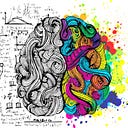Member-only story
The Origin of Computer Mouse
The computer mouse has become too familiar in the technology world. But for its present development, this device has gone through a fairly long calendar process with many very interesting milestones.
Over 50 years ago, that is, in 1968, an American engineer Douglas Engelbart demonstrated for the first time a prototype of a computer mouse at a computer science conference in San Francisco state. At that time, he called the device the “On-screen X-Y Positioning Device”.

The mouse was originally housed in a high-grade wooden box, twice the size of today’s mice.
Over 50 years ago, the first computer mouse was introduced to the public.
This was an event — with the participation of about 1,000 professional computers — which was later known as the “mother of all demos”. Conferences are the origin of many concepts that have become popular today such as: mouse, hypertext, dynamic linked file …
Engelbart — the father of mouse died in 2013 at the age of 88. Engelbart filed a patent in 1967, but only three years later the US recognized his invention. Engelbart’s patent provides the tools necessary to navigate a computer graphic screen with simple movements of the hand rather than by using the keys to manipulate the pointer on a blue screen as before (time when computer operations are still done by typing command line). When he showed off the demo of the device, he said: “I don’t know why we call it a mouse. It started that way and we never changed it.”
The mouse was originally housed in a premium wooden box, twice as big as today’s mice with three buttons on top, moving with the help of two wheels on the underside rather than a rubber trackball. In these two wheels, one will move along the horizontal axis and the other along the vertical axis. Over time, these wheels have been replaced with marbles, lasers, and LEDs, but the premise is the same: the movements are converted to binary codes and displayed again on a computer screen.
